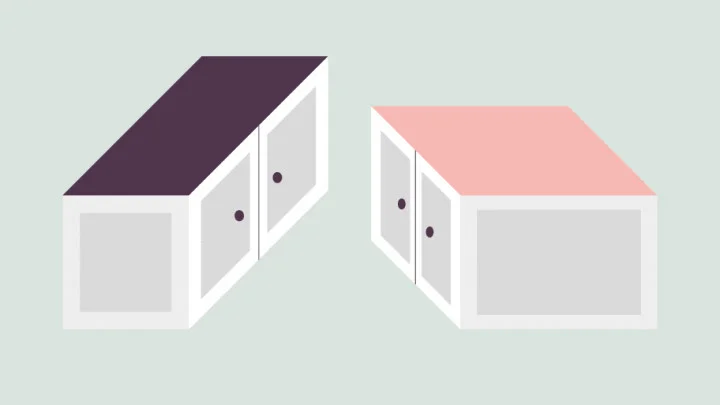If you see a couple two-dimensional parallelograms near each other, you probably feel pretty confident in your ability to discern which one outsizes the other. But as soon as those 2D parallelograms are part of a 3D illustration, the task becomes surprisingly difficult.
In the image below from UK-based furniture company Hammonds, there are two cabinets. Which one is bigger? Keep scrolling to find out if you’re correct.
Which Cabinet Is Bigger?
Not all optical illusions test us in the same way. Some, like this saturation illusion, focus on color—convincing us by way of a gradient background that three identical circles are actually three different colors. Magic eye puzzles, meanwhile, paradoxically require you to blur your vision in order to reveal hidden images.
The cabinets above involve depth perception. They’re modeled after an illusion called “Turning the Tables,” which cognitive scientist Roger Shepard published in his 1990 book Mind Sights. As the name suggests, Shepard used an illustration of tables rather than cabinets—but other than that, the two illusions are essentially the same.
Answer Key
It was a bit of a trick question: The cabinets (and the Shepard tables) are the same size. Basically, our brains jump to conclusions about flat drawings that help us picture them in real life—and those conclusions aren’t always accurate. The smaller side of the left cabinet makes it look narrower than the right one, but the tops don’t actually differ in size at all.
“Because of the inferences about orientation, depth, and length are provided automatically by underlying neuronal machinery, any knowledge or understanding of the illusion we may gain at the intellectual level remains virtually powerless to diminish the magnitude of the illusion,” Shepard wrote.
In other words, even once you’ve been shown how the illusion works—even once you’ve seen one parallelogram placed directly atop the other—you’ll probably still think the two pieces of furniture look like they’re different sizes.
This article was originally published on www.mentalfloss.com as Which One of These Cabinets Is Bigger?.

